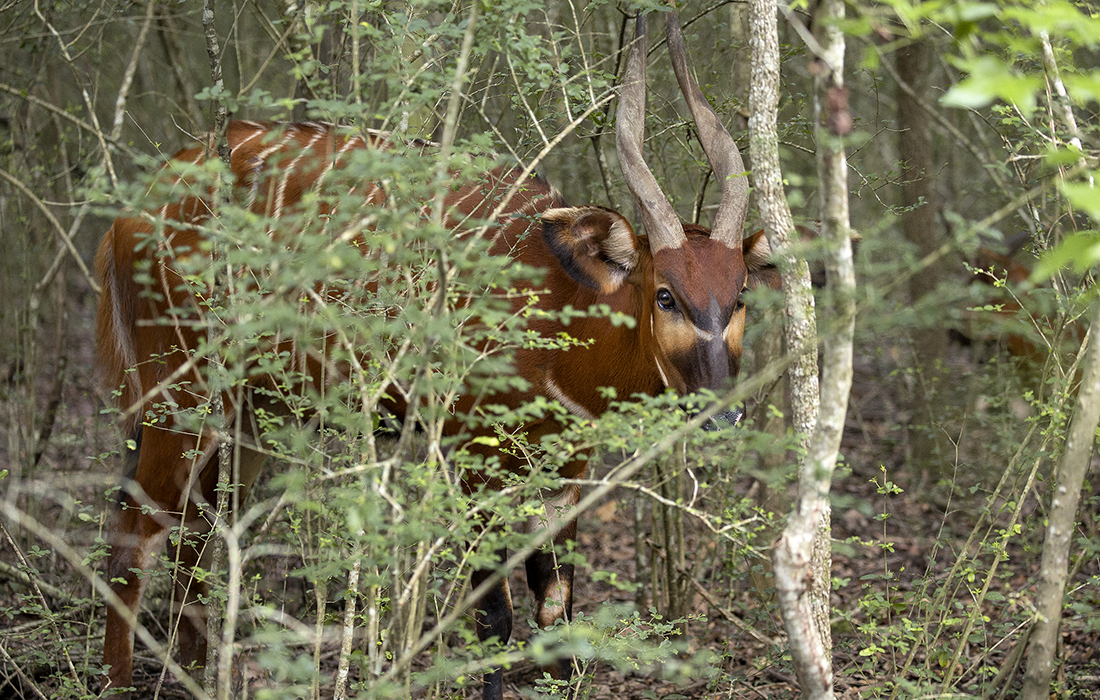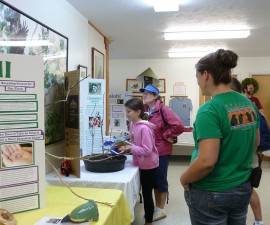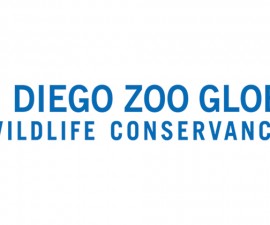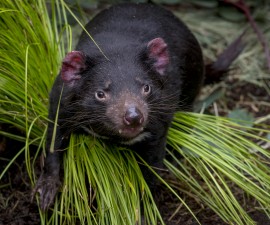BY Karyl Carmignani
Photography by Tammy Spratt
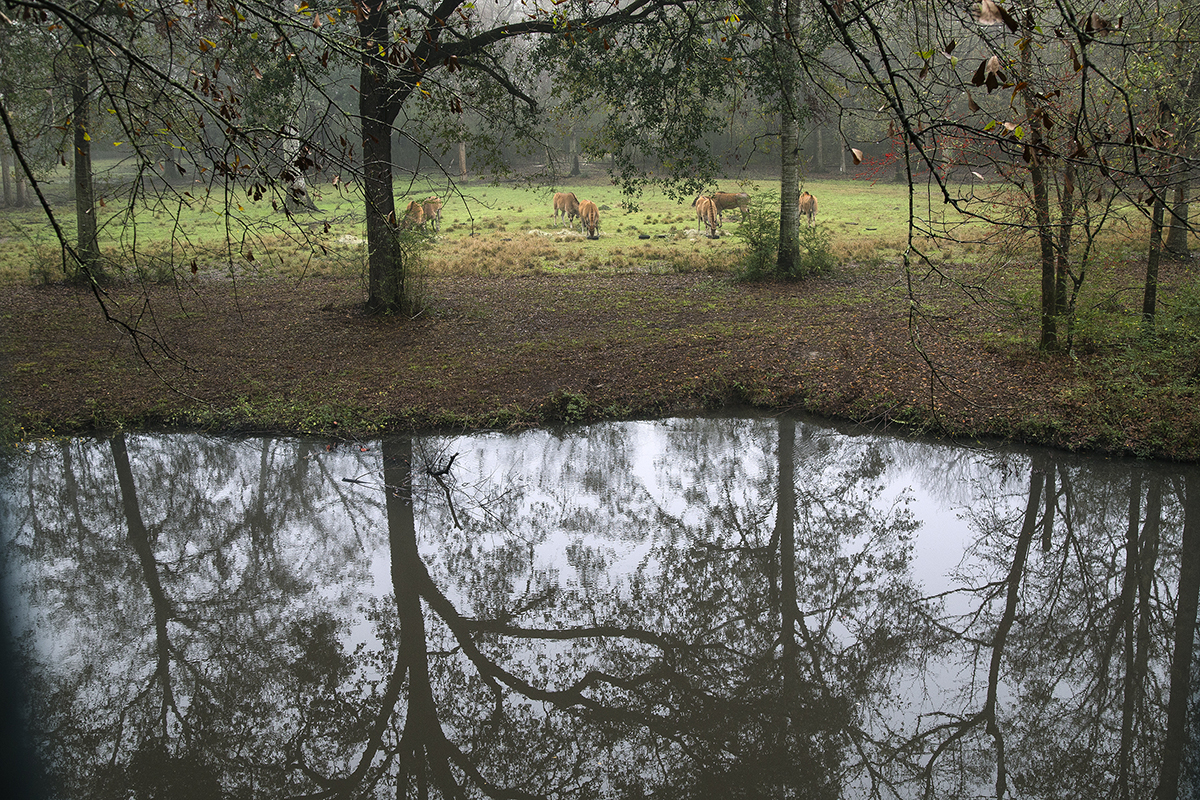
PEACEFUL, EASY FEELING
The spacious, secluded, forested habitat should inspire these endangered species to breed, leading to sustainable populations of endangered species of wildlife in North American zoos.
 The number of acres for the ASW.
The number of acres for the ASW.
New Orleans just got jazzier! The Alliance for Sustainable Wildlife (ASW), a lush, secluded, 1,000-plus-acre breeding facility, recently received 28 animals representing 6 rare and endangered species. Located on New Orleans’ West Bank on the Mississippi River, the site will house even more groups of rare, roaming mammals and birds in a microcosm that will lead to sustainable populations of wildlife in North American zoos. This groundbreaking collaboration between San Diego Zoo Global and Audubon Nature Institute is a haven for unique and endangered species. “When we moved the animals in last May, it was the culmination of four years of work,” said Randy Rieches, Henshaw Curator of Mammals at the Safari Park. “Releasing them into this natural habitat and watching them explore made it all worth it.”
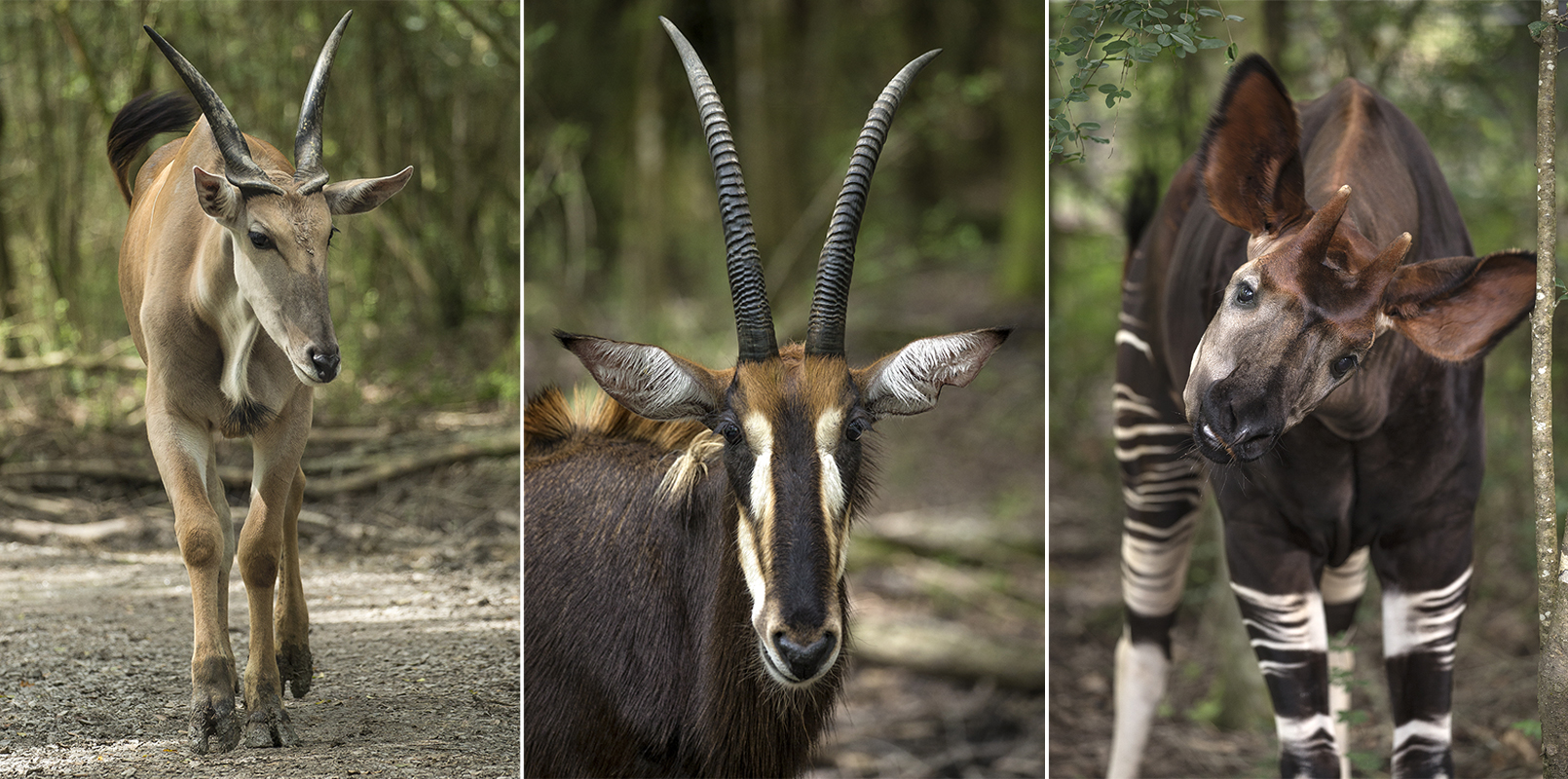
ADORNED WITH HORNS
Patterson’s eland, sable antelope, and okapi are three of the hoofed species introduced to the new breeding center.
 The number of species that are breeding at the center.
The number of species that are breeding at the center.
The first phase saw the release of six bongo antelope, six sable antelope, six Patterson’s eland, six giraffe, two yellow-backed duiker, and two okapi. Randy explained that animals are released in accordance with their social structure, so the bongo, sable antelope, and eland were grouped as five females with a single male, similar to how they would live in the wild. “The sables have a matriarchal society, so it is difficult to introduce new females to an established herd,” he said. Yellow-backed duikers are considered facultatively monogamous, in biology parlance, so a male and female breeding pair were introduced together. Two male okapis were released into a spacious enclosure to get acclimated, and females will join them this fall. “We have worked out a lot of issues with husbandry ‘tricks’ over the past 40-plus years at the Safari Park,” said Randy, like reducing any “home court advantage” among individual animals. “They get to see their new habitat at the same time.” The giraffe herd (one male and five females) spent their time in quarantine in Texas in a “dead paddock,” meaning there’s no grass or water on the ground, to eliminate any parasites that may be present, ensuring they arrived at ASW healthy. The tower of giraffes was released soon after the others.
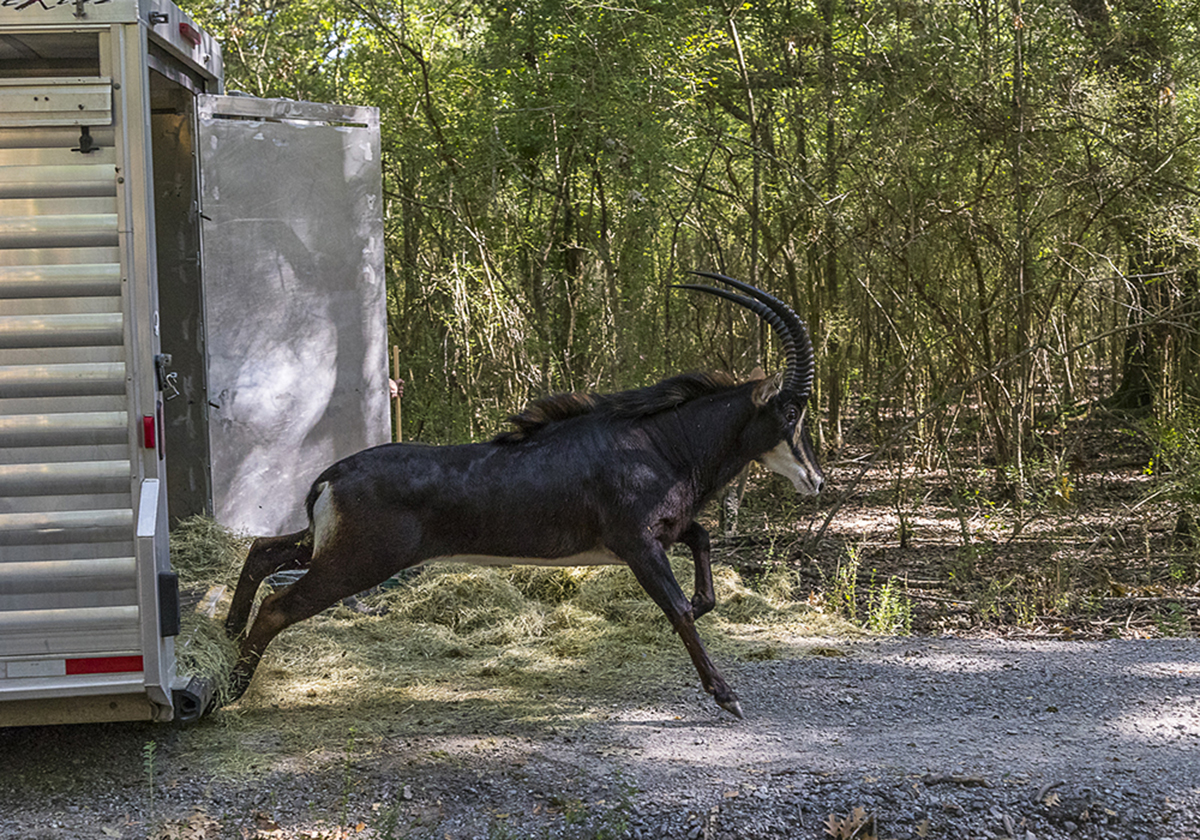
JUMP TO IT
A handsome sable antelope gets a running start on exploring his new habitat.
 The distribution of how expenses are shared by San Diego Zoo Global and Audubon.
The distribution of how expenses are shared by San Diego Zoo Global and Audubon.
While San Diego Zoo Global owns all the animals, staff from Audubon Nature Institute will manage them day to day. “I am proud of our counterparts at ASW,” said Randy. “It is gratifying to see the breeding program moving forward. These dedicated keepers will take great care of the animals.” ASW is similar to the Safari Park in that the animals have large, spacious enclosures that are mostly natural environments. The first phase uses about 500 acres of densely wooded habitat. Food and water platforms are located under roofs, as there’s quite a bit of rain. Like at the Safari Park, each animal will be counted daily, and the fence line is monitored by the keepers. Randy is enthusiastic about the project. “Successful breeding here will help to repopulate species in other zoos,” he said. “We are one of the few zoos able to ‘build’ breeding groups and use our expertise to help form sustainable populations.”
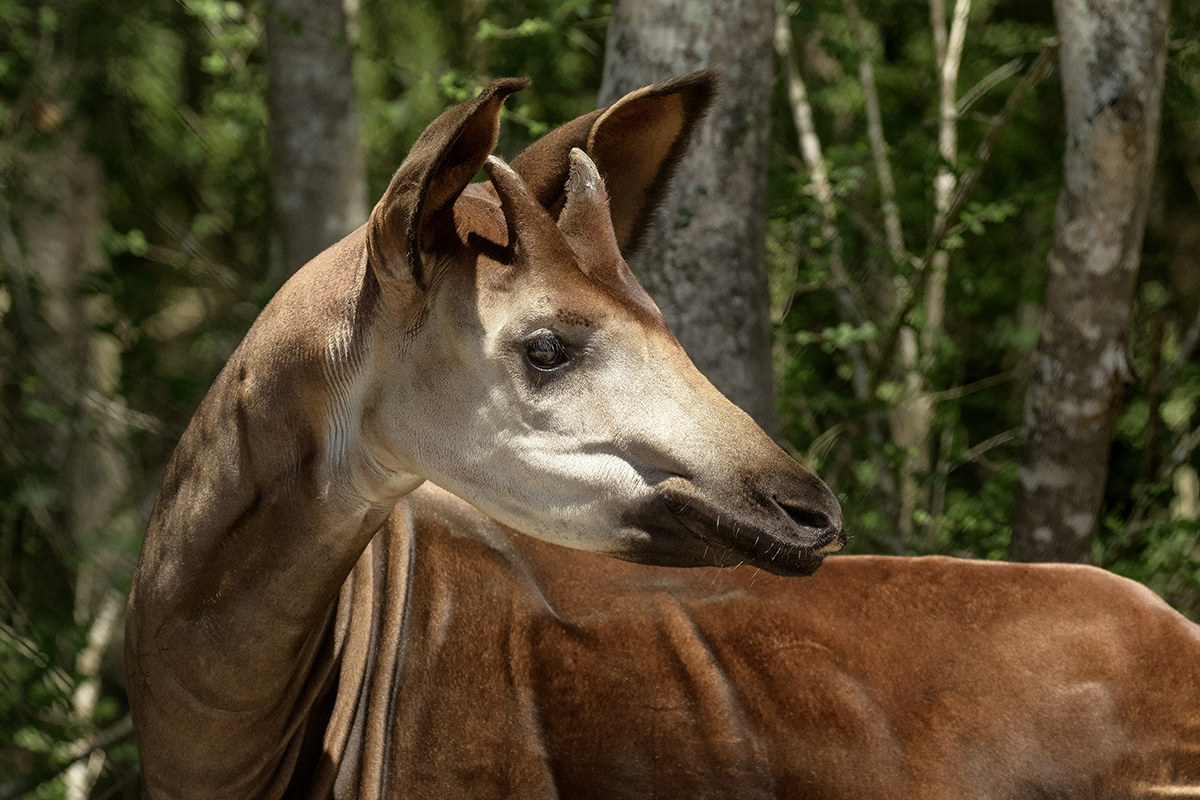
COPY THAT
The okapi of Central Africa is more closely related to the giraffe, despite zebra-like stripes on its hindquarters. They are classified as endangered.
 The number of keepers taking care of the animals.
The number of keepers taking care of the animals.
An executive committee, consisting of staff from San Diego Zoo Global and Audubon, make decisions for the project—such as which species to add, when to build the next phase, which contractors to select, and funding going forward. It can be complicated, but working with a like-minded organization for a common goal helps a great deal. “Native habitats are shrinking all the time, leading to more space needed in zoos for rare and endangered species,” said Randy. “The Alliance for Sustainable Wildlife is adding 500 acres of near-pristine habitat for breeding groups of animals, and that’s a very good thing!” With collaboration, commitment, and a steadfast alliance, we can help wildlife thrive.

